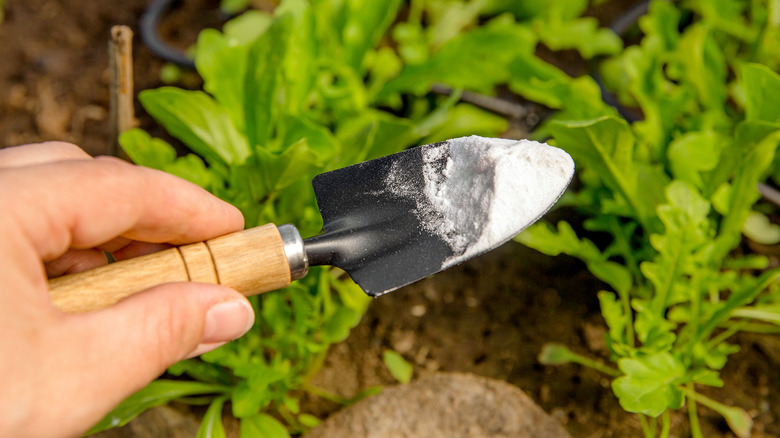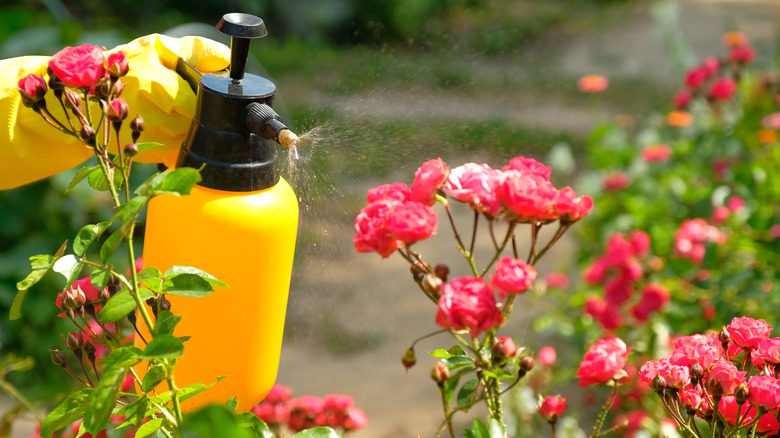The Baking Soda Hack You Might Not Want To Try In Your Garden
We may receive a commission on purchases made from links.
There are few things more frustrating than fighting a fungal infection in the flower garden. No one wants to see unsightly leaves overcome with black spots or white, powdery mildew. Some gardeners will rush to sprinkle baking soda in their flowerbeds as a miracle cure-all for killing fungus. But you might want to think twice before trying this much-talked-about hack.
Everyone knows baking can help deodorize a smelly refrigerator. It's organic and nontoxic, so it's safe to use around people and pets, and it's always gotten high marks as an organic cleaner as well. Baking soda is a key ingredient when learning how to clean plastic herbicide barrels so you can repurpose them as compost bins or planters. Some people even promise baking soda will freshen a bouquet of flowers, but that's really up for debate.
In general, there are known effects of sodium bicarbonate (baking soda) on plant growth. Ultimately, it can sometimes hinder plant growth, and using too much baking soda can lead to problems in the soil. Baking soda is essentially a salt, which can wilt flowers in certain concentrations, and it can also turn soil more alkaline. And while some research shows that mixing baking soda with horticultural oil can reduce fungal infections with some kinds of roses, it doesn't work with all plants. It isn't a miracle fungal cure for marigolds, lilacs, and rosemary. Even worse, baking soda might be more likely to damage the leaves of the rosemary plant.
Do this instead of using baking soda in the garden
Since baking soda can stunt plant growth and could harm plants, use it sparingly in the garden. The risk might not be worth the reward, so while you could be tempted to use baking soda on garden fungus, you might want to try safer strategies instead. First of all, how do you even know if you have a fungus in your garden?
There are several kinds of fungus, but common signs your plant might have a fungal infection include spotty leaves, yellowed leaves, dark sunken spots on the flowers, or a white, powder-like dusting on your leaves. Instead of using baking soda to treat fungus, try using chemical fungicides such as Serenade or Actinovate. Be sure to cut off any leaves with lesions or dark spots to curb the infection. Also, sometimes moving plants from the partial shade to full sun can help cure problems.
When it comes to fungal infections, an ounce of prevention is really worth a pound of cure. So, head off fungus infections before they happen. Try laying down a layer of mulch, which cuts down on soil erosion and helps make the base of plants more resistant to infection. Make sure your plants are properly spaced apart. Cramped plants are more likely to develop disease, since crowded leaves are less likely to dry out in the sun. You can also use copper sulfate as a preventative, such as Bonide Captain Jack's Copper Fungicide.

